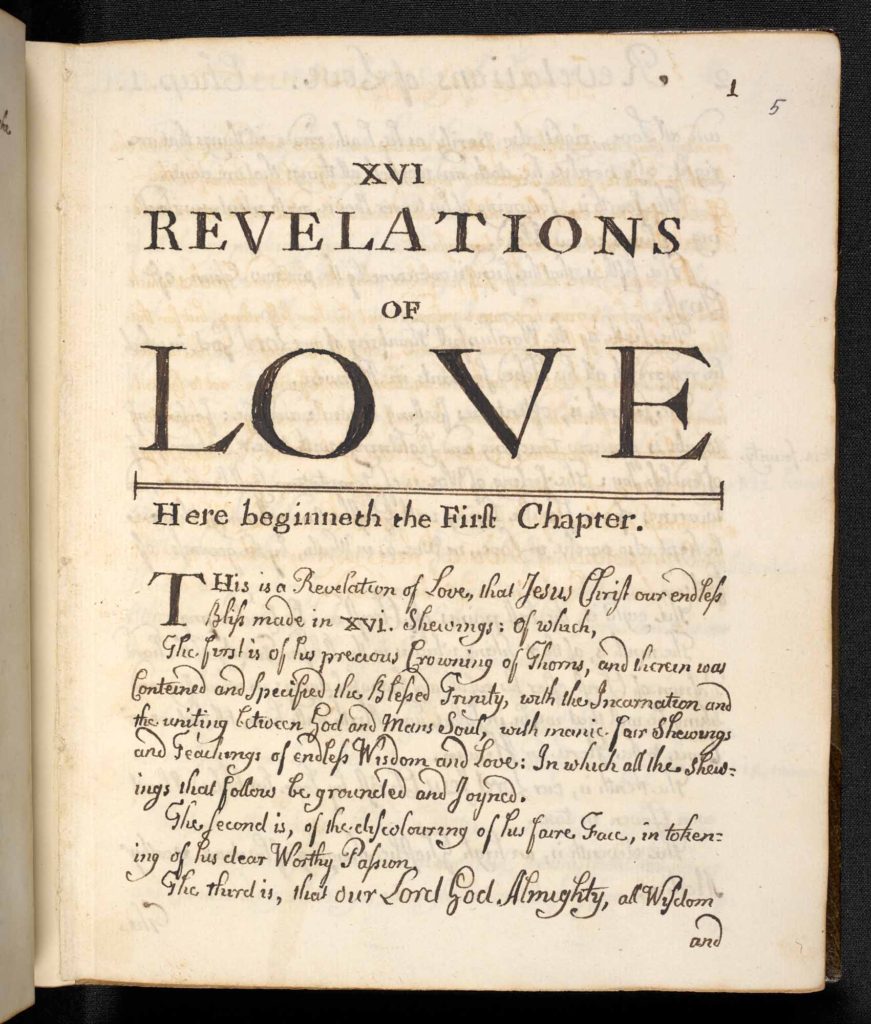

But it is her visions as a young woman that she is now remembered for. Julian, as an elderly anchoress, gained a reputation for wisdom, and was visited by the younger mystic Margery Kemp, among others. Once anchorites entered their individual cells they would stay there until they died, but they could have visitors, usually people looking for spiritual advice. This was someone who, instead of joining a convent, lived a type of monastic life in a ‘cell’ (a room or suite) usually attached to a church.

What we do know is that later in life she became an anchoress: a female anchorite. Although people often assume that she must have been a nun when she had her visions, she actually seems to have been living at home during her illness, with her mother and parish priest at her bedside. Julian may have been married and even had children, we don’t know. In doing so she became the first identifiably female writer in the English language, or at least the first whose work has survived. She wrote her visions down so that the message could be shared with everyone who was interested. She also decided they were not just for her, but for all people. Although she initially wrote them off as delirium, she was later convicted that they were truly messages from God. Julian saw a number of visions or ‘shewings’ while near to death and during her recovery. As Karen Murdarasi wrote this past February in Premier Christianity : During one of the two periods that stand out in the history of English spirituality (the 14th century), which saw such inspiring works produced as those of Richard Rolle, Walter Hilton, and the anonymous author of The Cloud of Unknowing, Julian’s text now stands as possibly the most well-beloved of them all - and for good reason (incidentally, the second great age of English spirituality was during the 17th century). And, most importantly for many of us, her visions are theologically rich and wonderfully provocative. It is also the first extant text in English by a woman. That the manuscript survives at all is just short of miraculous, as the documentary posted below makes strikingly evident.

Her book, Revelations of Divine Love, is remarkable for many reasons. On May 8th, the Church of England (to which I belong) and Anglican churches around the world commemorate Dame Julian of Norwich (c.


 0 kommentar(er)
0 kommentar(er)
